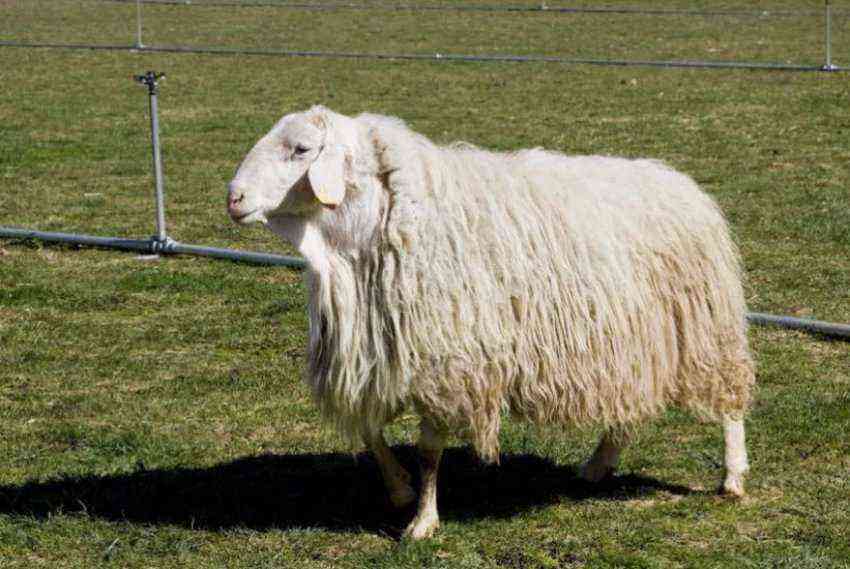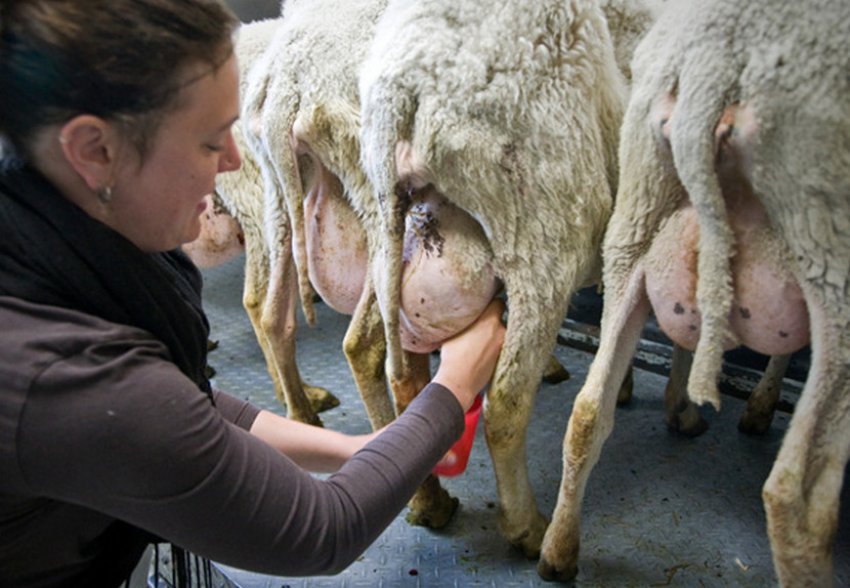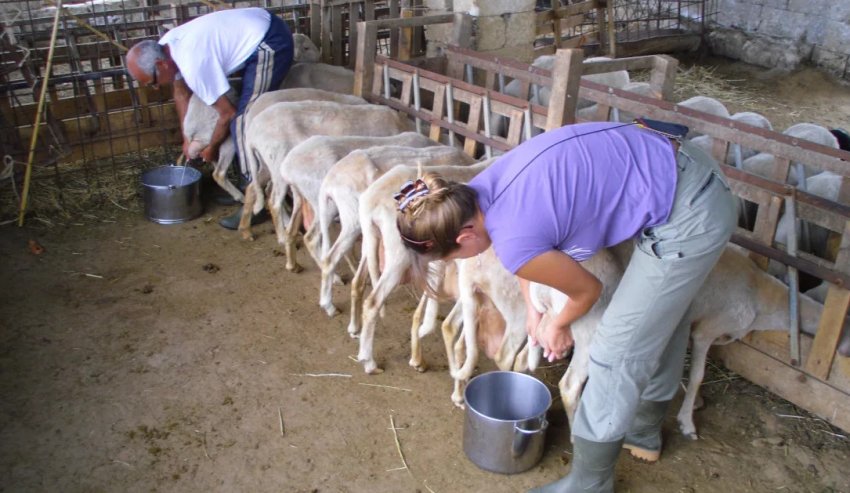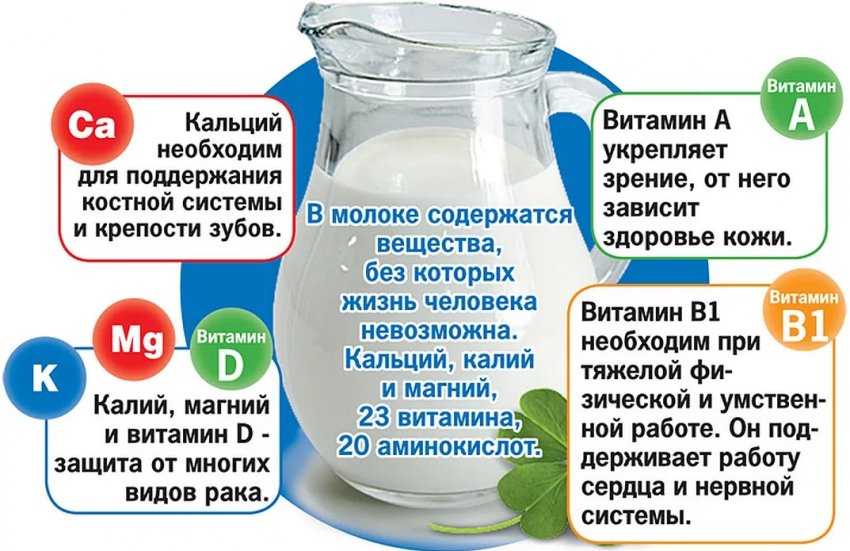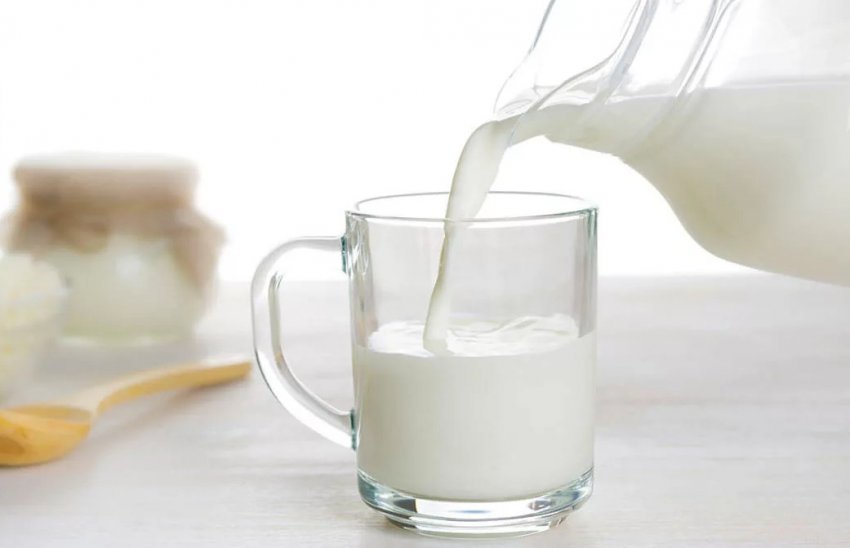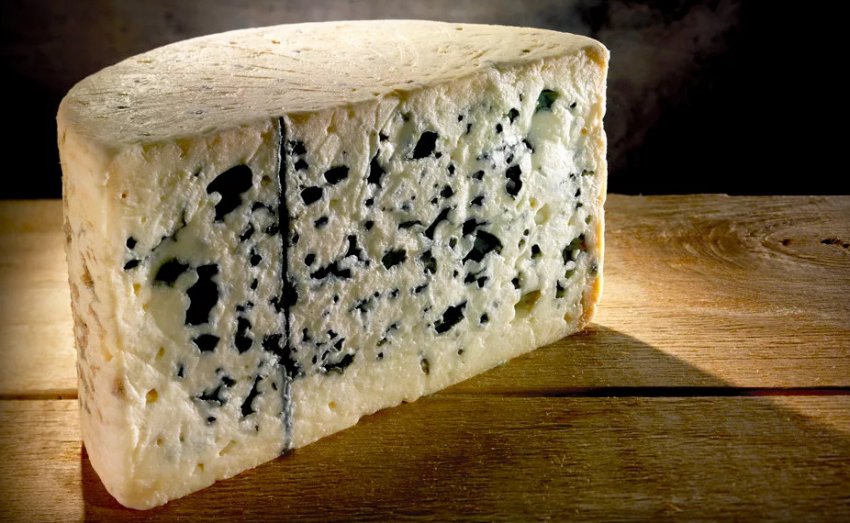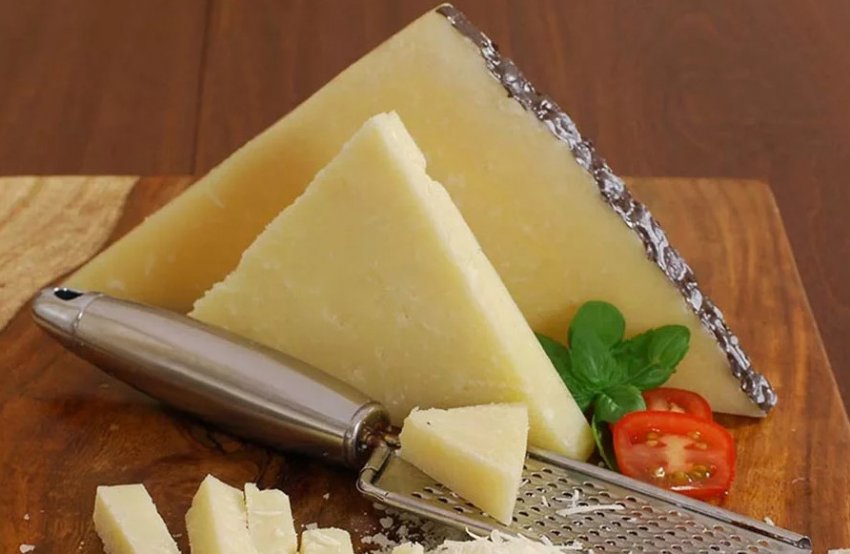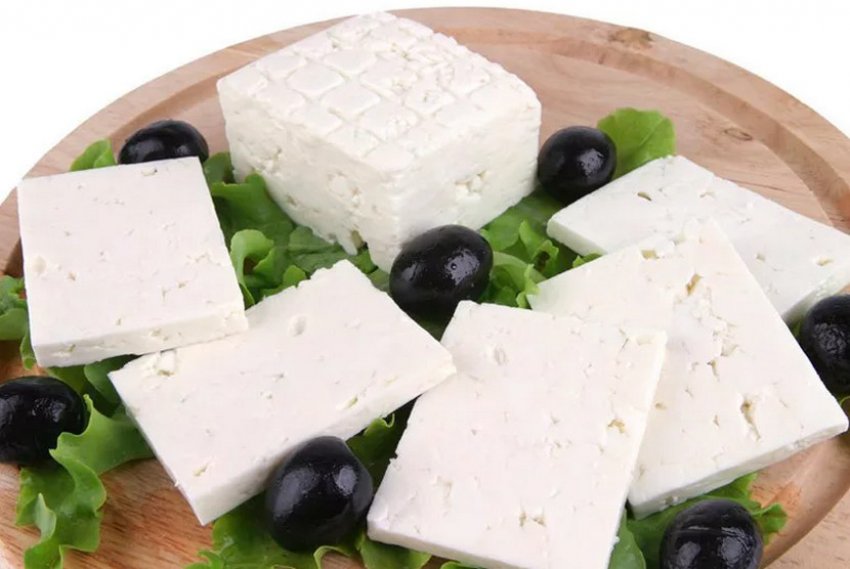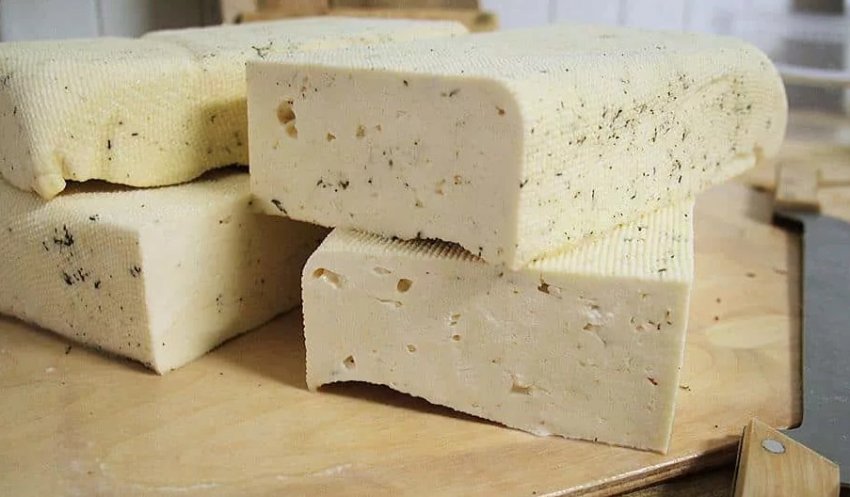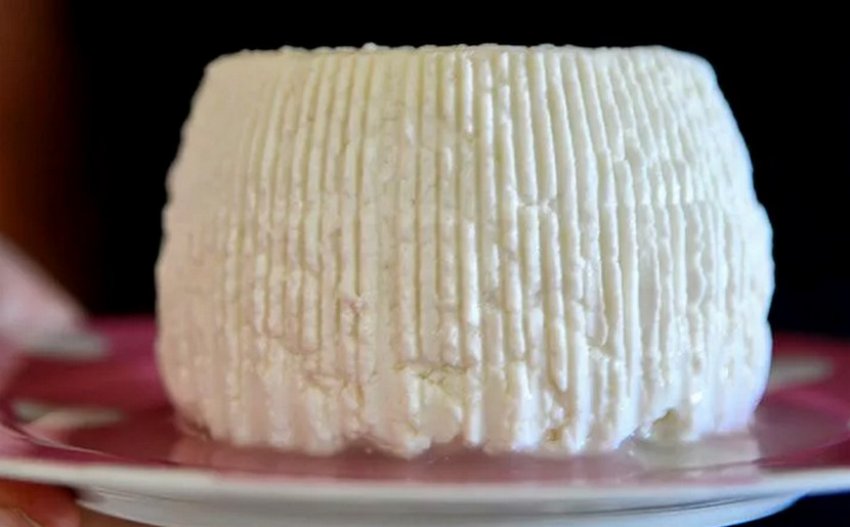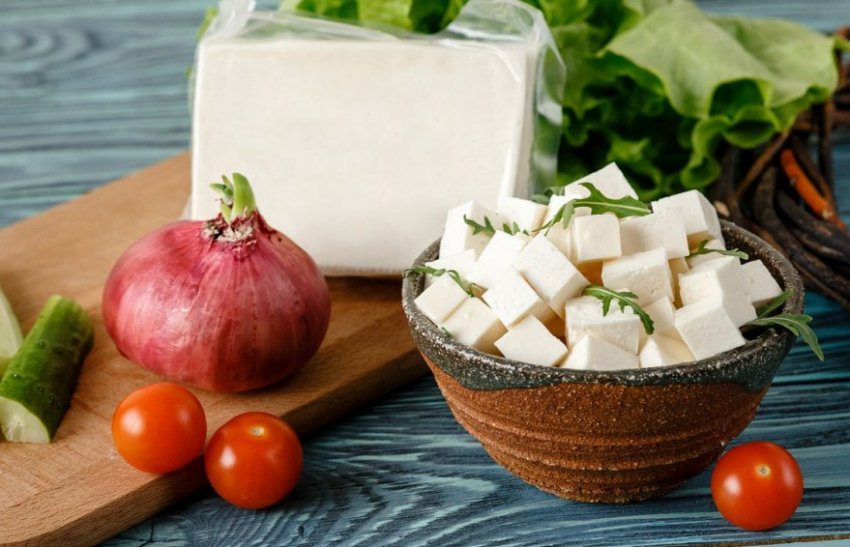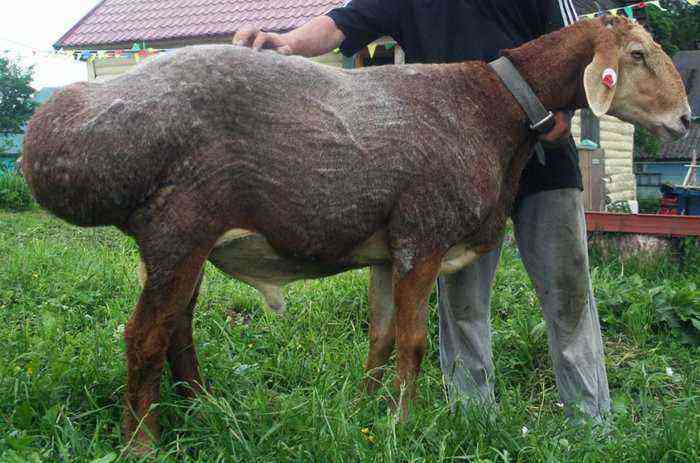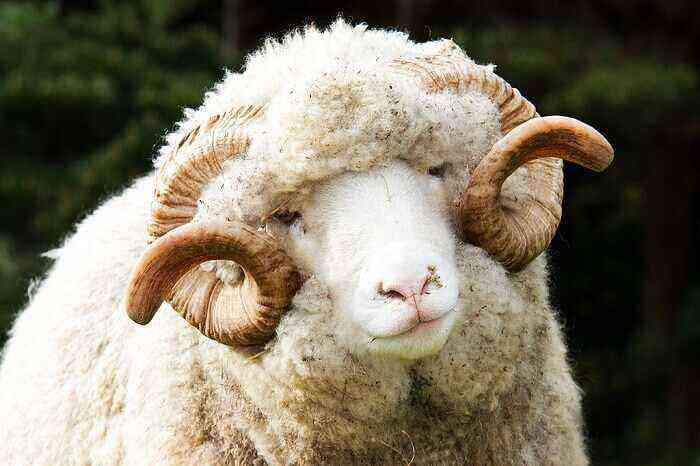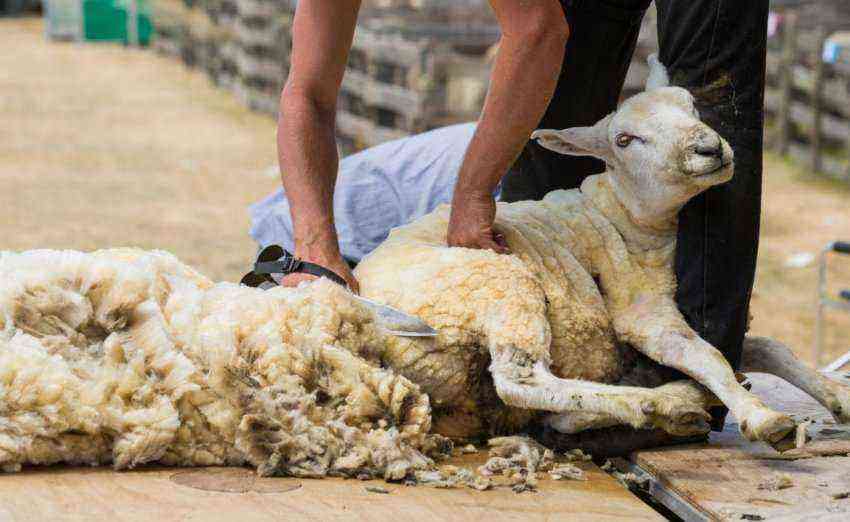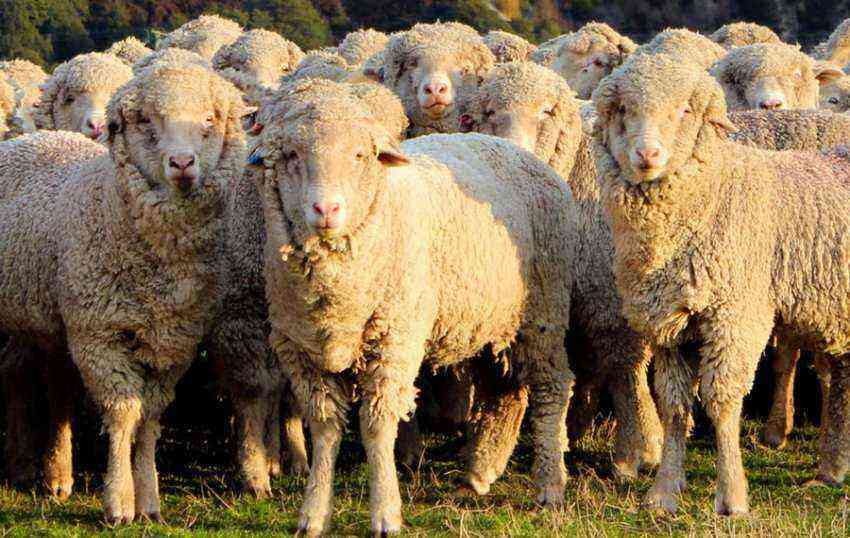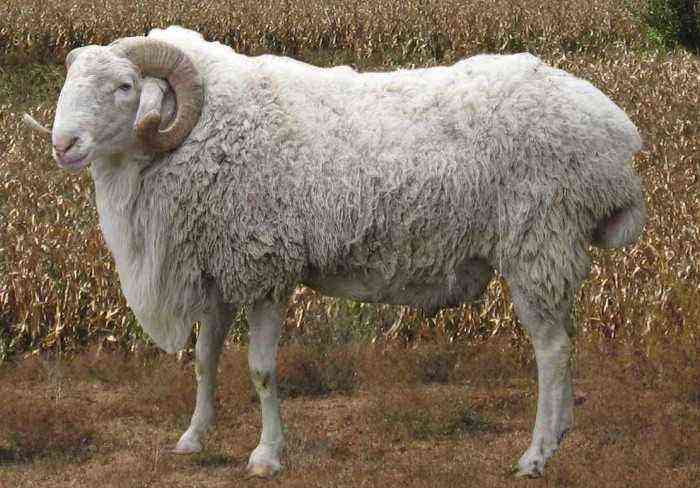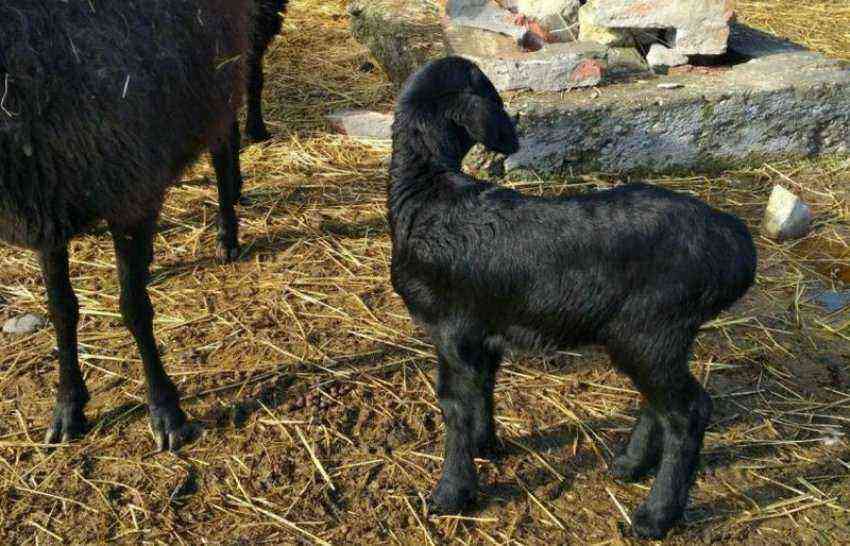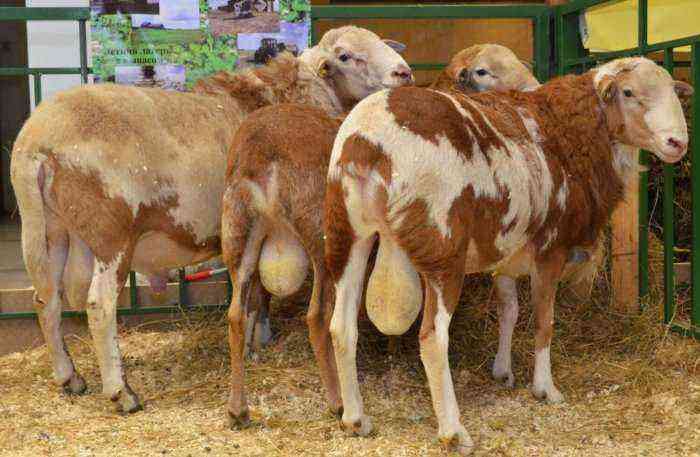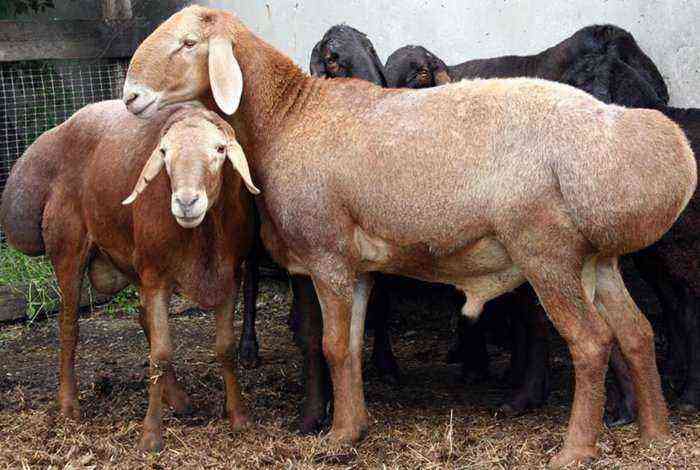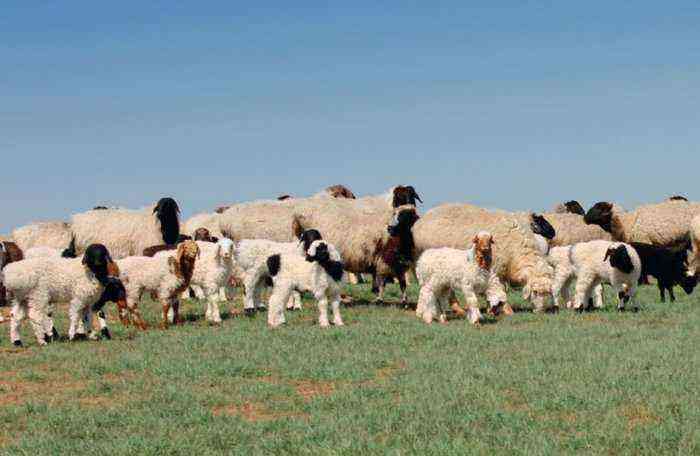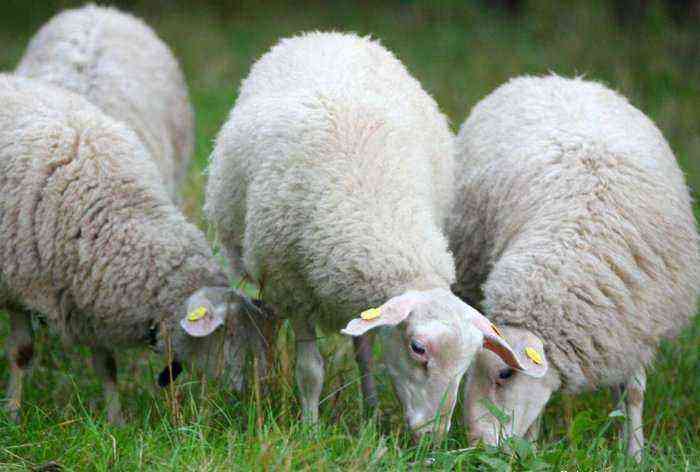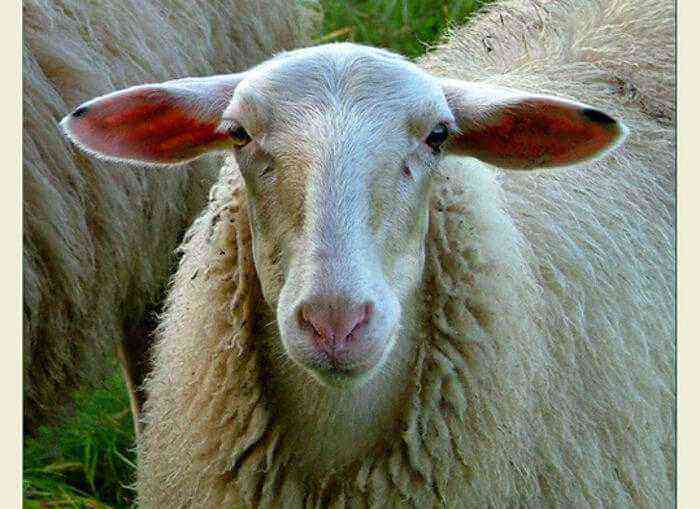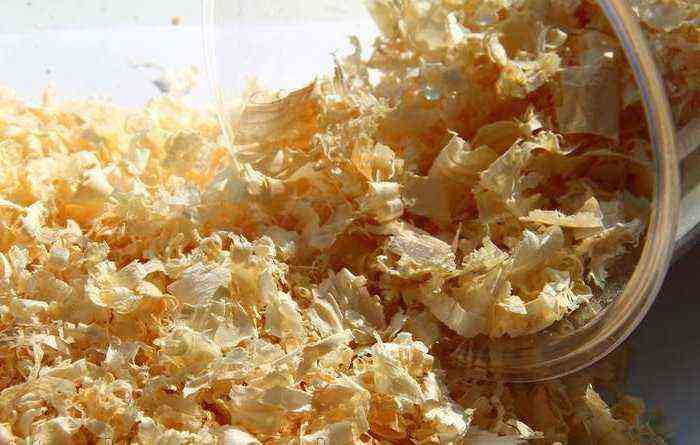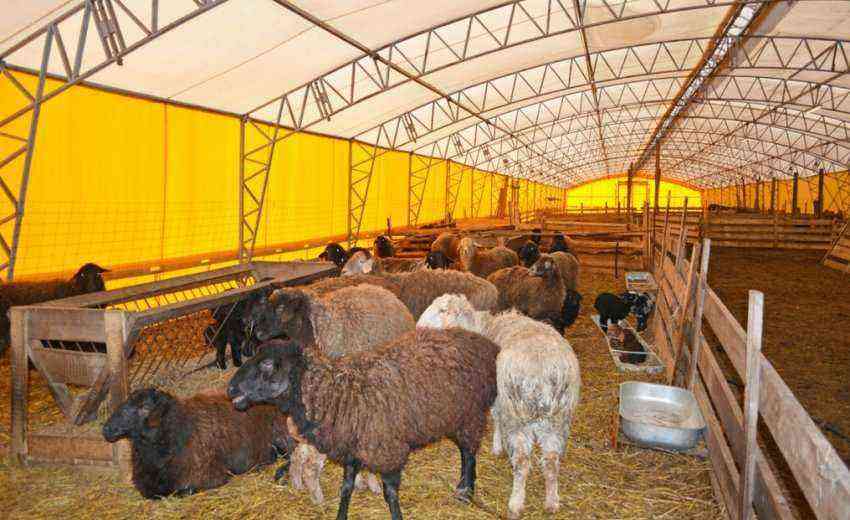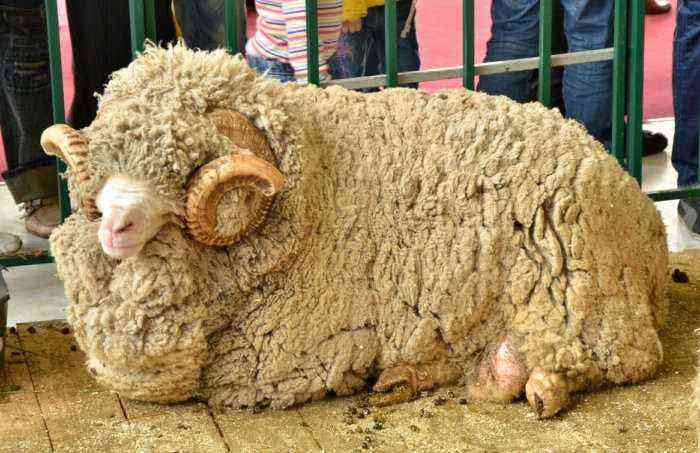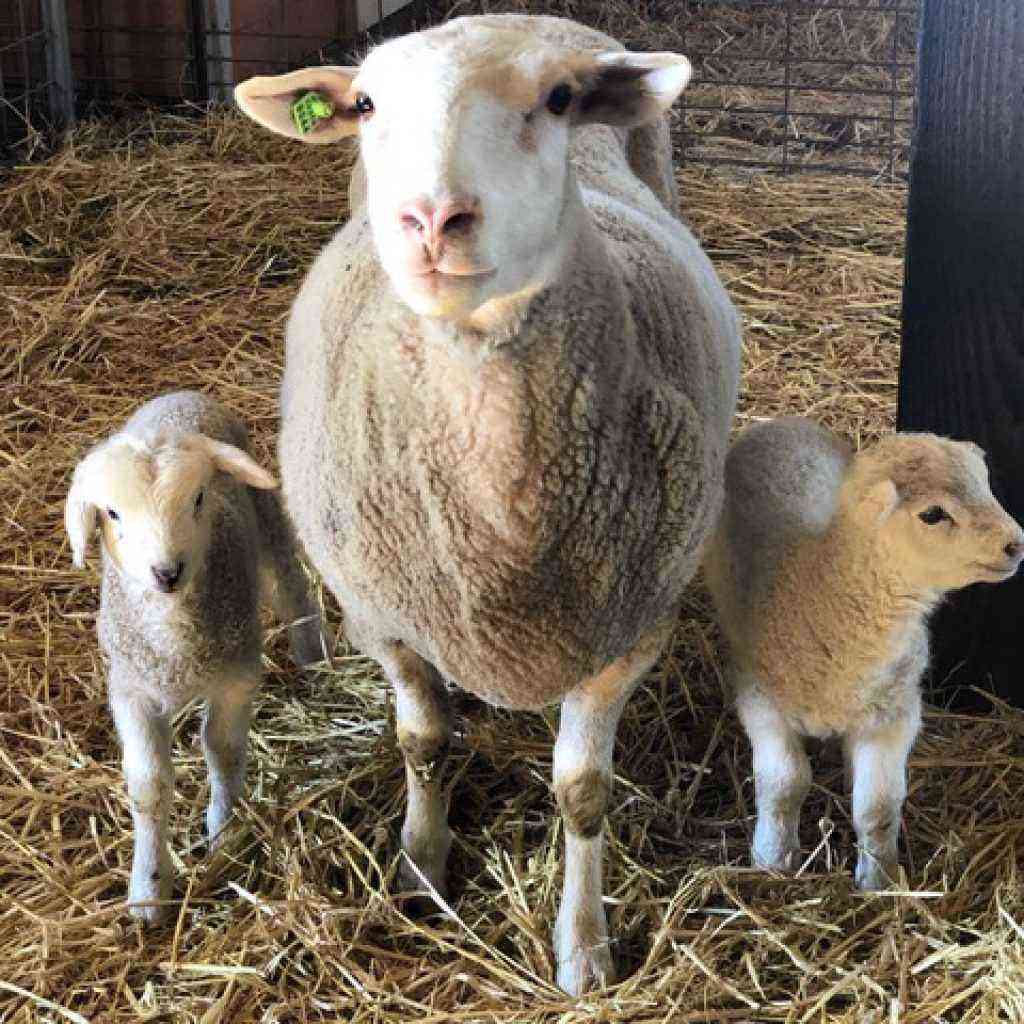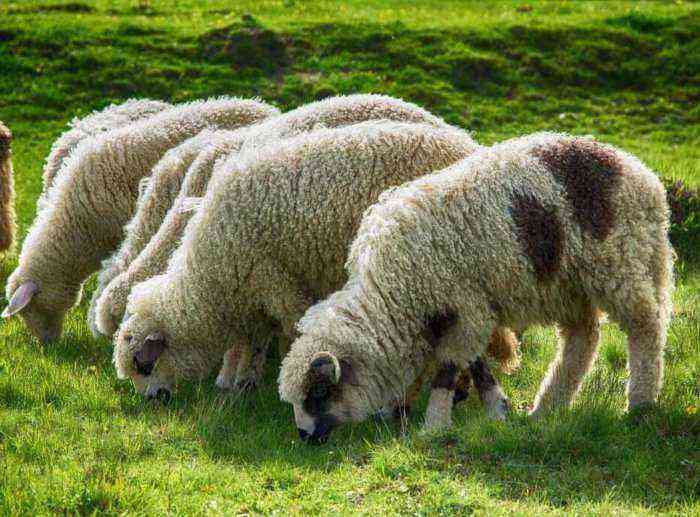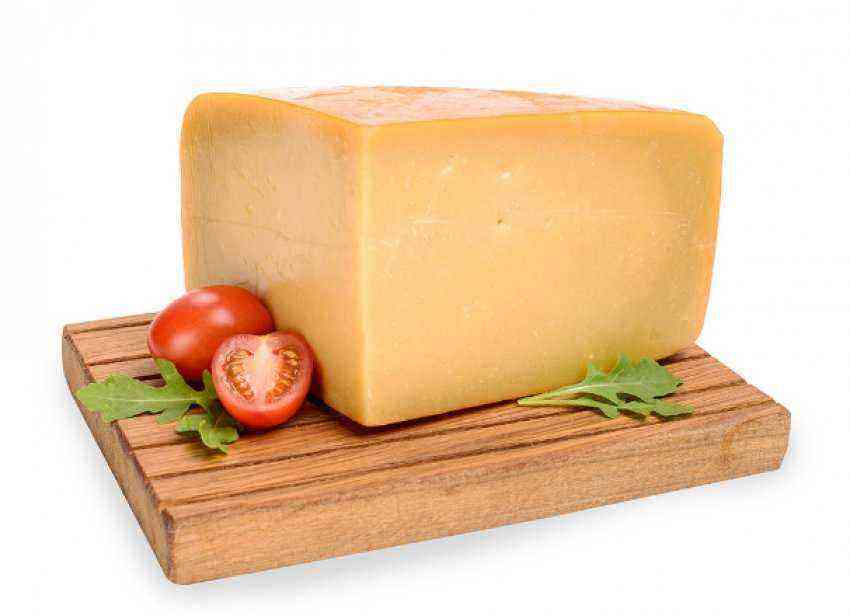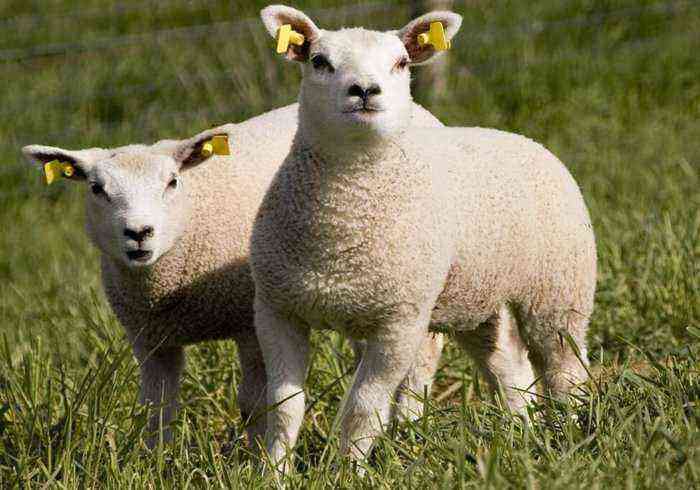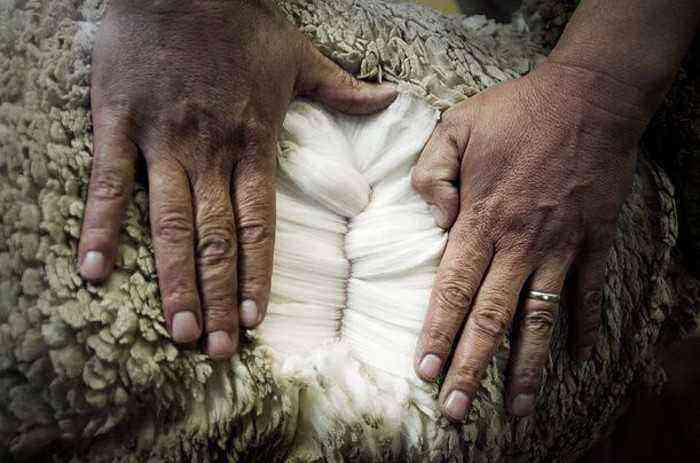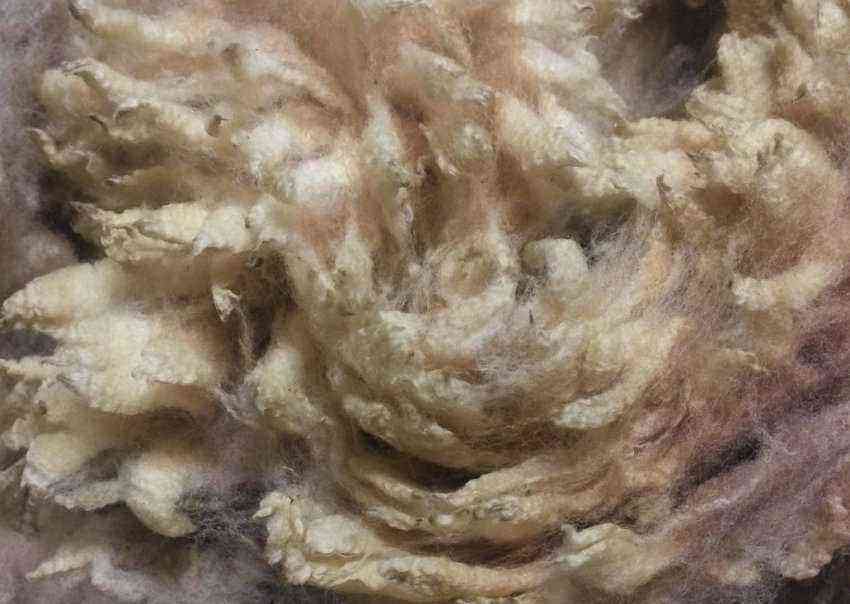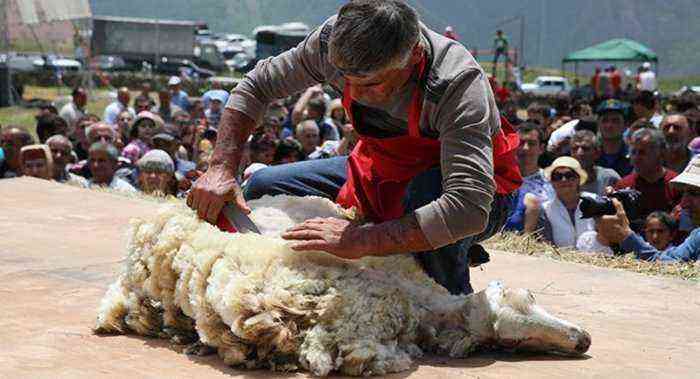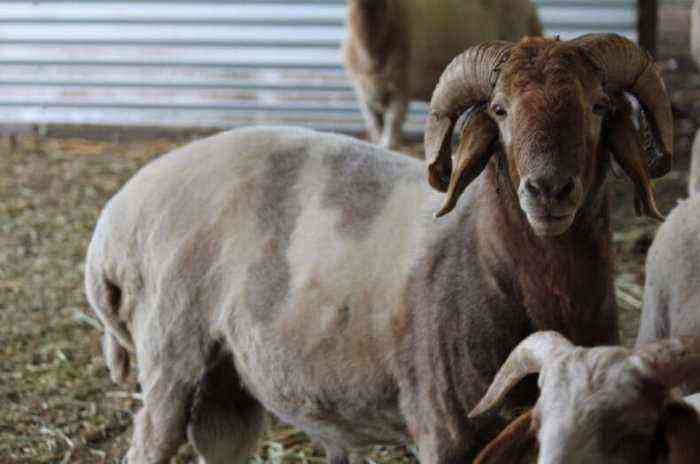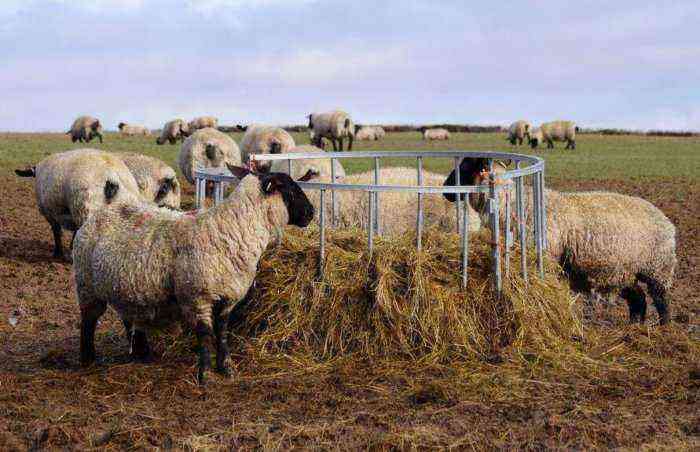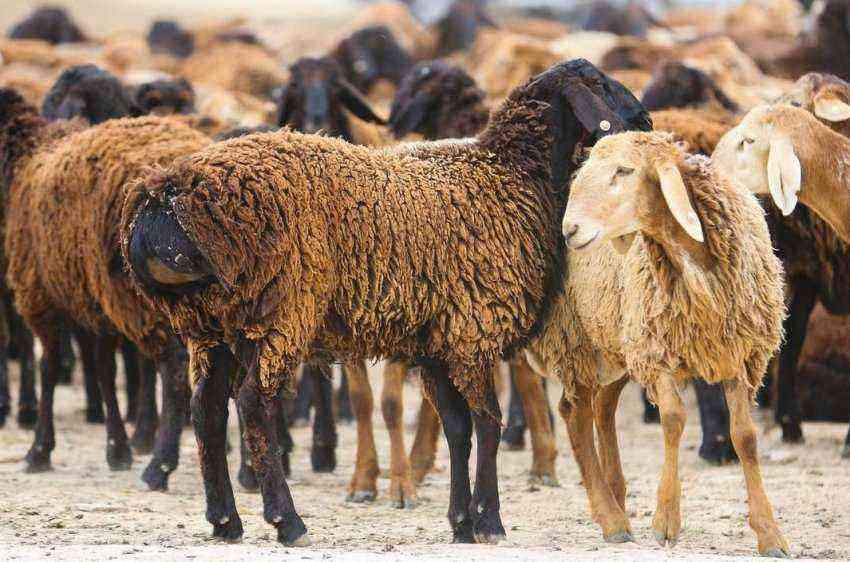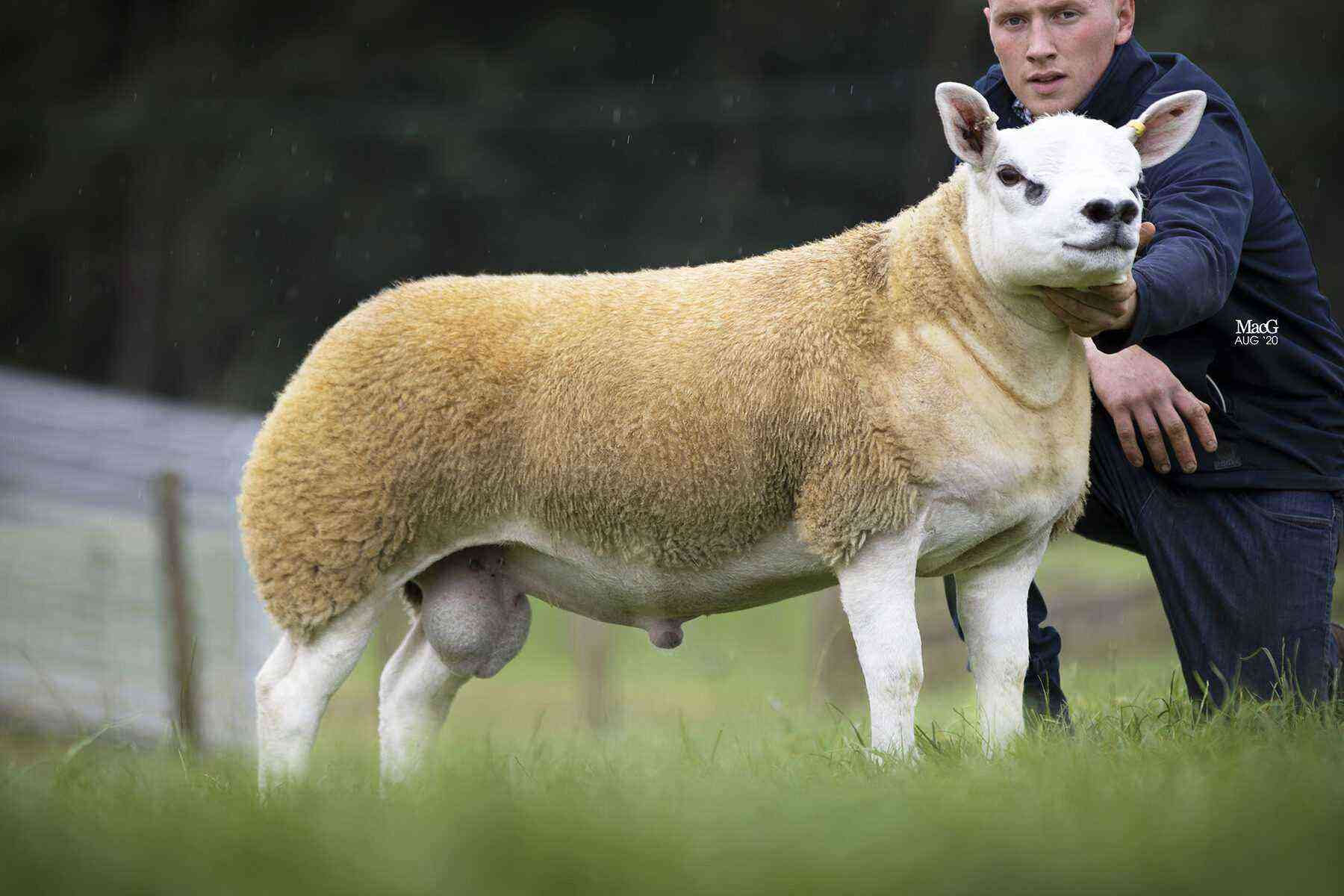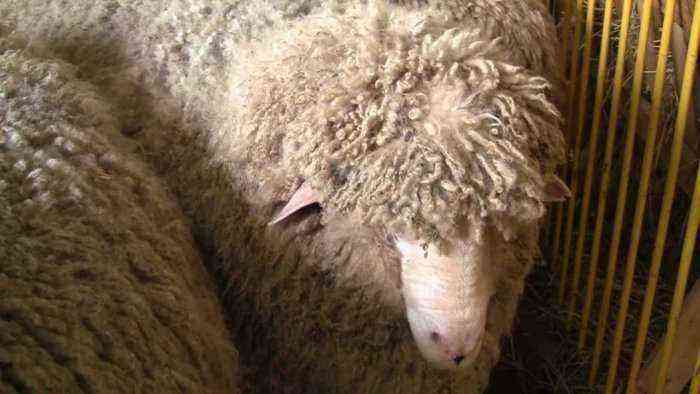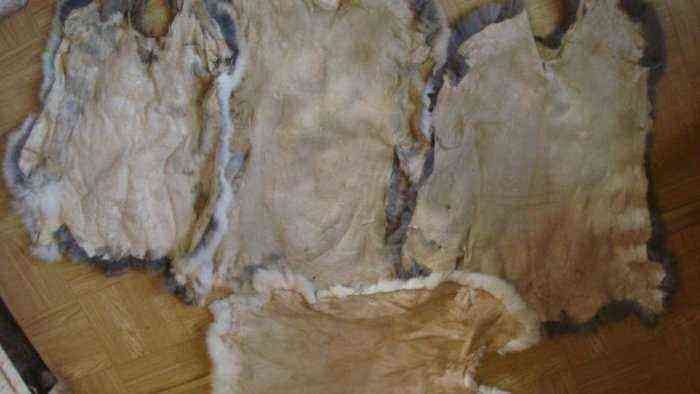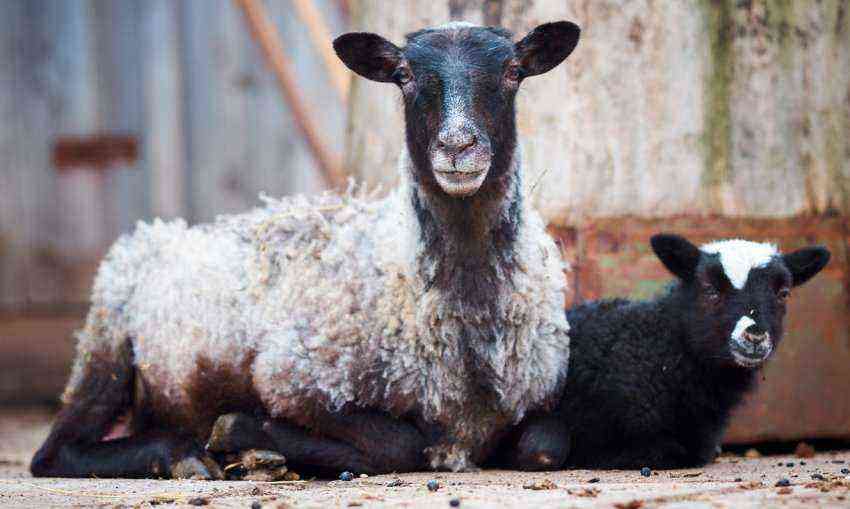In addition to cows and goats, sheep can also be a source of milk in a farm. You can milk these animals only during lactation, and the volumes of milk are small, but it has a valuable chemical composition and is the main ingredient for the production of gourmet cheese. Read more about what breeds of sheep are dairy, the basic rules for milking animals, as well as recommendations for milk processing and a description of the most famous types of sheep cheese – later in the article.
Which sheep are milked and which are not
The lactation period in sheep lasts for 4-5 months. The volume of sheep milk production depends on the breed of the animal, the conditions of its maintenance and the chosen direction of animal husbandry. Usually a farmer breeds sheep for wool or meat, and milk is just a by-product obtained from the queens during the lactation period. But not all sheep are recommended to be milked, since in some cases the entire volume of milk goes to feed for offspring.
Did you know? Sheep milk is used in the production of dry baby food for weakened babies – the product helps to gain body weight faster and strengthens the child’s immunity.
Meat breeds of sheep
To obtain a large amount of meat with high commercial characteristics, it is recommended to breed meat-oriented sheep breeds. The wombs of meat sheep also feed the lambs with milk, but they are usually not milked, since in this case the farmer needs to get a quick increase in the weight of the young, on which the timing of the slaughter of animals and the size of their carcass will depend.
Therefore, high-quality feeding of lambs when breeding meat sheep is a priority, and all the milk of the uterus should go to feed the offspring.
To obtain a large amount of meat with high commercial characteristics, it is recommended to breed meat-oriented sheep breeds.
The main features of the appearance of sheep meat breeds are presented below:
- large size of adults;
- barrel-shaped body;
- rapid increase in muscle mass in young animals;
- increased resistance of animals to adverse climatic conditions;
- good immunity;
- compact and narrow frame;
- thin skin with a thick layer of fat.
Dairy sheep breeds
A feature of dairy breeds of sheep is that during lactation they produce an increased amount of milk, which is enough not only for high-quality feeding of lambs, but also for use in the food industry. Some breeds of animals are considered dairy, therefore they are bred by farmers to obtain valuable smushki – the skins of lambs killed on the 3-4th day of life.
In this case, the sheep continue to be milked until the end of the lactation period, receiving a large amount of sheep’s milk. A description of the most common dairy breeds of sheep is presented later in the article.
Romanovskaya
This breed of sheep is one of the most common and is bred by many farmers in order to obtain tasty meat and high-quality durable wool, from which hosiery is made.
The main characteristics of the breed are presented below:
- The body of animals is medium or large in size, and the coat is colored gray or black. Hair length reaches 35 cm.
- Sheep of this breed have a broad chest, a strong straight back and strong, symmetrically located legs of medium length.
- The weight of an adult female is about 50 kg, and the male – up to 85 kg.
- For one lamb, the uterus brings up to 5 lambs, which reach sexual maturity at the age of 5 months.
- Milk production is about 120-130 liters for the entire lactation period, or about 1 liter per day.
Important! One female of the Romanov breed of sheep can bring offspring up to 3 times a year, giving up to 300 liters of milk for all periods of lactation.
Ascanian
Sheep of this breed have thin and thick wool. They were bred in Ukraine at the beginning of the XNUMXth century on the territory of the Askania Nova nature reserve.
The main characteristics of Askanian sheep are presented below:
- The body of animals is large and regular in shape, covered with dense cream-colored hair, the length of which can reach 10 cm.
- The skeleton of animals is strong, with a lot of muscles.
- An adult ram weighs 110-120 kg, and a sheep – about 65 kg.
- The fertility of the breed is average – about 100 lambs are born from 130 queens.
- During one period of lactation, the female gives up to 140 liters of milk. On average, for 1 day, 1,2 liters of milk with a fat content of up to 9% is obtained from each lactating sheep.
Цигайская
Tsigai sheep are one of the most ancient breeds and are bred all over the world.. Animals are distinguished by endurance and versatile productivity – they are bred for delicious meat, quality wool and milk.
The main characteristics of the breed are listed below:
- Adult animals have an elongated barrel-shaped body of compact size. The wool is dyed white, and the length of the strands can reach 14 cm.
- Tsigai sheep have a straight back and a broad chest. The legs are straight, set correctly and securely hold the body of the animal.
- Adult males gain weight up to 85–100 kg. Sheep are smaller and weigh 45–60 kg.
- The fertility of queens is low – the number of cubs in each lambing does not exceed 2 individuals. The lamb reaches slaughter age at the age of 6 months.
- The milk production of sheep is 150 liters per lactation period, or about 1,25 liters per day.
Did you know? Pupils in sheep are not round, but rectangular.
How to properly milk a sheep
Sheep milk is the main component in the diet of newborn offspring, therefore, before milking, you need to consider how many months old the lambs are. The most commonly used approaches to milking sheep are:
- if lambs are used to obtain astrakhan skins, then the female begins to be milked from 4-5 days after lambing. This procedure in the first 2 months is carried out 2 times a day in the morning and evening hours, and then the animals are milked 1 time per day;
- if the young animals are weaned from their mother at the age of 3 months, then the uterus is milked from this time until the end of the lactation period (that is, for 45–60 days) – at first the animals are milked 2 times a day, and closer to the end of lactation, this procedure is carried out 1 time per day;
- you can start milking a sheep before weaning the lambs, but only after they have reached the age of 1,5 months – at the same time, for the time of milking, the young animals are temporarily transferred to another pen, and after completing this procedure, the lambs are returned to their mother.
Important! If a sheep begins to be milked before the lambs are weaned, then the young and the female must be supplemented with other types of feed so that the animals gain weight well and develop normally.
Milking preparation
It is most convenient to milk a sheep in a small paddock or a machine made to fit the size of the animal. The front and rear walls of the structure must be made closed so that the sheep go inside through the front door and exit after milking through the back.
The floor in the paddock is made slightly inclined so that the forelimbs of the animal are slightly higher than the hind ones and the female behaves calmer. The person is placed behind the udder of the animal.
Before you start milking, you need to perform a few preparatory steps:
- wash hands thoroughly with hot water and soap;
- rinse the udder of the female with warm water, and then wipe it dry with a clean towel;
- lubricate the nipples of the animal with a special ointment or a small amount of vegetable oil – this helps to avoid irritation on the delicate skin of the udder;
- knead the sheep’s udder with your hands, making light massaging movements – this procedure is recommended to be carried out for 1 minute;
- express the first stream of milk on the floor – for this you need to grab and pinch the nipple with your fingers, and then 2-3 times run it from top to bottom with your thumb bent at an angle;
- prepare a suitable clean bucket for milking and cover it with several layers of gauze on top.
Milking
Compared to cows and goats, sheep do not produce much milk, so the entire milking process takes no more than 5–7 minutes. The procedure for milking a sheep is similar to milking a cow, and the differences are only in the size of the udder of these animals.
Step-by-step instructions for milking sheep are presented below:
- Sit on a small stool behind the animal. Place a clean milk bucket under the udder.
- Grab the first pair of udder teats with both hands.
- Take milk from each nipple in turn, gently stretching it with your fingers from top to bottom.
- Grasping the udder with your left hand, squeeze and pull down the nipples several times with the fingers of your right hand.
- Express milk from the second pair of nipples in the same way.
- After milking, rinse the udder of the animal with warm water, and then dry it with a clean towel.

Characteristics of sheep milk
Sheep milk has a rich chemical composition and contains a lot of substances useful for the human body. It is much fatter than cow’s and has a high calorie content, so it is practically not used fresh.
Did you know? Sheep have excellent memories, and newborn lambs can recognize their mother by her voice.
The nutritional value of 100 g of sheep’s milk is given below:
- calorie content – 111 kcal;
- proteins – 5,6 g;
- fats – 7,7 g;
- carbohydrates – 4,8 g;
- water – 80,8 g;
- ash – 0,9 g.
In addition, the composition of sheep’s milk contains the following components:
- vitamins – A, B1, B2, B4, B5, B6, B9, B12, C, E, H, PP;
- macronutrients – calcium, magnesium, potassium, chlorine, phosphorus, sulfur, sodium;
- trace elements – iodine, iron, manganese, cobalt, copper, molybdenum, selenium, zinc, strontium;
- lactose;
- essential amino acids – arginine, valine, gimstidin, isoleucine, leucine, lysine, methionine, threonine, tryptophan, phenylalanine, tyrosine;
- nonessential amino acids – alanine, aspartic acid, glycine, glutamic acid, proline, serine, tyrosine, cysteine;
- saturated fatty acids – butyric, caproic, caprylic, capric, lauric, myristic, palmitic, stearic;
- monounsaturated fatty acids – myristoleic, palmitoleic, Omega-9;
- polyunsaturated fatty acids – linoleic, arachidonic, omega-6.
- Thanks to such a rich composition, sheep’s milk brings great benefits to the human body:
- strengthens bones and prevents the development of osteoporosis, rickets;
- promotes the restoration of the body after illnesses;
- increases the resistance of the immune system;
- prevents the development of cancer cells;
- helps fight insomnia;
- stimulates the activity of the brain;
- improves the condition of the skin and hair;
- beneficial effect on vision;
- effectively cleanses the body of toxins;
- helps fight anorexia;
- strengthens the heart and walls of blood vessels;
- ensures the normal development of the fetus during pregnancy.
Important! The daily norm of sheep’s milk for an adult is no more than 150 g per day.
The “harmful” qualities of sheep’s milk include:
- high fat content – the product should not be consumed by people suffering from overweight;
- the ability to cause an increase in blood cholesterol levels as a result of high fat content;
- irritating effect of the product on the gastric mucosa in the presence of gastritis or ulcers.
How to properly process sheep’s milk
Sheep’s milk differs from cow’s milk in appearance, texture and taste. Due to its high fat content, it is not consumed raw, but used for processing. The quality of the finished product depends on the correctness of this procedure, so the processing of sheep’s milk must be carried out taking into account the following requirements:
- milk obtained after milking must be filtered through several layers of gauze, removing all unwanted impurities from it;
- if the product will not be processed immediately after milking, then it must be cooled to a temperature of +10 ° C and placed in a dark place;
- during boiling, sugar must be added to a container with sheep’s milk so that it does not curdle – 1 tsp will be required for 1 liter of liquid product. Sahara;
- to avoid the appearance of foam during heat treatment, you need to stir the milk often, and after boiling, immediately remove it from the heat;
- you can prevent the burning of sheep’s milk by pre-rinsing the dishes in cold water;
- if the product has curdled, then it can be used to make cottage cheese.
Sheep milk products
Due to the fact that sheep’s milk is denser and heavier than cow’s milk, it is ideal for the production of cottage cheese and creamy yogurt. But most often this product is the main ingredient for making hard and pickled cheeses. They have a high fat content and a rich creamy taste, and due to the low lactose content, they are easier to digest in the stomach.
Important! It is recommended to boil sheep’s milk for no more than 3 minutes – otherwise it will lose all the vitamins and nutrients in its composition.
Cheese
Most types of cheese can be made from both sheep’s and cow’s milk. But there are several varieties of this product, which are made exclusively from sheep’s milk. These cheeses have a special taste and useful chemical composition, which is why they are highly valued among consumers and have a higher cost.
The most common types of sheep’s milk cheese are listed below:
- Roquefort. The pulp of this cheese has a buttery texture, white color and a characteristic nutty taste, and inside it are small cavities filled with precious blue mold. On the outside, the product is covered with a shiny, moist white crust and exudes a mixture of sheep’s milk and limestone aromas.
- Pecorino Romano. The product has a sharp taste with pronounced salty notes, and its flesh has a dense structure and is colored white-yellow. Outside, the cheese is covered with a light and smooth crust, and also exudes a rich aroma. It is used to prepare first courses, appetizers and salads, and is also often served with honey as a dessert.
- Feta. Soft cheese that crumbles easily and has a sour-salty taste. The product is colored white, and it takes at least 90 days to age it. Feta should be stored exclusively in brine, because without liquid, its surface dries quickly, and the taste deteriorates. It is used for preparation of salads and cheese appetizers.
- Boil. This pickled cheese is a traditional product in Armenia and is made in special clay pots. The product has a “brittle” pulp of white or cream color, inside which there are small cavities. There is no crust on the cheese, and its sour-milk taste is characterized by characteristic sharp notes and a salty aftertaste with a slight bitterness. It is used for making salads, appetizers and khachapuri.
- Broccio. It is made in the form of a ball or an oblate cylinder, covered on the outside with a thin layer of creamy mold. The product has a rich spicy taste with pronounced sweet and salty notes. The pulp of the cheese is soft, has a creamy texture and is colored white. The product is used as an ingredient for vegetable salads and can be added to soups and main courses.
Brynza
The most famous cheese made from sheep’s milk, which has a relatively low cost, is feta cheese.. It can be used to prepare vegetable and meat dishes, snacks and soups, as well as a filling for pastries. Cheese is often consumed as an addition to tea, as it goes well with bread.
Did you know? For cutting Roquefort cheese, a special device was invented – a Roquefort cutter. It uses a wire as a blade, which allows you to maintain the integrity of the soft mold heads in the pulp.
The main characteristics of cheese are presented below:
- the product has a moderately dense texture, breaks easily;
- cheese is painted white;
- taste – sour milk, with a characteristic salty aftertaste;
- the product exudes a pleasant sourish aroma;
- the surface of the cheese does not have a crust, but a clear pattern from a fine mesh is visible on it;
- cheese is recommended to be stored in brine so that its surface does not dry out.
Due to its thick texture and high fat content, sheep’s milk is a valuable ingredient from which you can get a nutritious and healthy dairy product. With the help of the above recommendations, you can choose the right breed of sheep for this product, effectively milk animals, and use milk to produce delicious cheeses.
